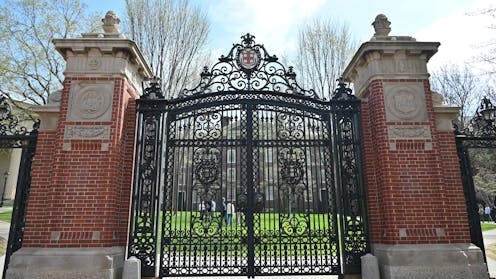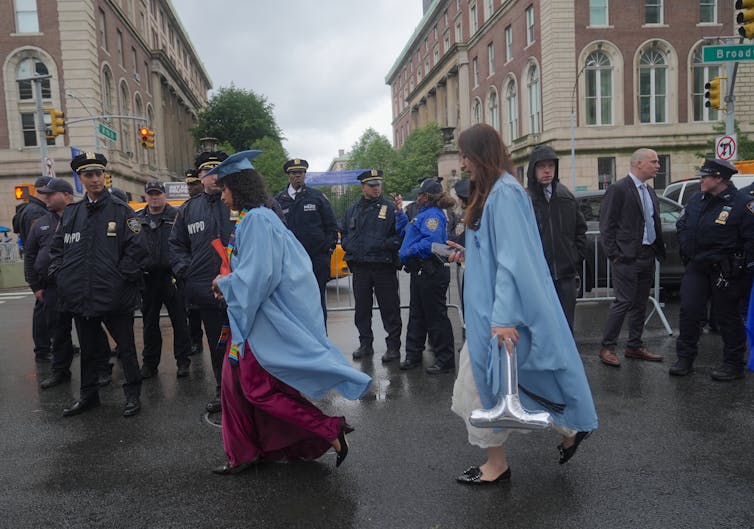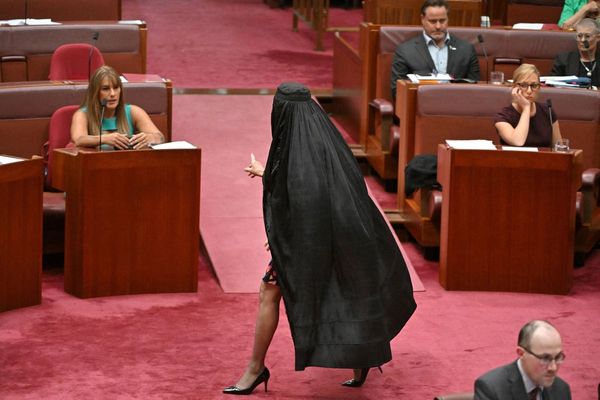
The Trump administration and Harvard University are reportedly close to reaching a settlement that would require Harvard to pay US$500 million in exchange for the government releasing frozen federal funding and ending an investigation into antisemitism on campus.
This follows similar deals the White House struck with Columbia University and Brown University in July 2025. Both of those universities agreed to undertake campus reforms and pay a large sum – more than $200 million in the case of Columbia and $50 million for Brown – in order to receive federal funding that the Trump administration was withholding. The White House originally froze funding after saying that these universities had created unsafe environments for Jewish students during Palestinian rights protests on campus in 2024.
As a scholar of higher education politics, I examined the various deals the Trump administration made with some universities. When Harvard announces its deal, it will be informative to see what is different – or the same.
I believe the Columbia and Brown deals can be used as a blueprint for Trump’s plans for higher education. They show how the government wants to drive cultural reform on campus by giving the government more oversight over universities and imposing punishments for what it sees as previous wrongdoing.
Here are four key things to understand about the deals:

1. Antisemitism isn’t a major feature of the agreements
The Trump White House accused Brown and Columbia of tolerating antisemitism during campus protests. But the administration neither followed federal standards for investigating antisemitism, nor did it dictate specific reforms to protect Jewish students.
Ahead of its deal, Columbia in March 2025 adopted a new, broader definition of antisemitism that was created by the International Holocaust Remembrance Alliance. The United Nations and most European Union countries also use this definition.
Yet the school’s 22-page deal mentions antisemitism only once, where it says Columbia is required to hire an additional staff member to support Jewish students’ welfare.
Brown’s deal, meanwhile, did not involve the university adopting a particular definition of antisemitism. But Brown did commit to offering “research and education about Israel, and a robust Program in Judaic Studies.” Brown already hosts a Judaic Studies program, and it is unclear from the agreement’s text what additional measures are required.
The deals also extend well beyond antisemitism concerns and into questions of gender and the composition of student bodies.
Columbia agreed to provide “single-sex” housing and sports facilities, for example. The university has an optional Open Housing program that allows mixed-gender roommates and several gender-neutral restrooms.
This places the school in line with Donald Trump’s January executive order that says a person’s gender is based on their sex as assigned at birth.
Brown’s deal also requires single-sex sports and housing facilities. In addition, Brown committed to using definitions of men and women that match Trump’s executive order.
Columbia, which enrolls about 40% of its students from other countries, also agreed to “decrease financial dependence on international student enrollment.”
The Brown deal says nothing about international education.
2. Both deals are expensive but vague about financial details.
Columbia must pay a fine of more than $200 million to the federal government, while Brown will make $50 million in donations to Rhode Island workforce development programs.
In both cases, it is not clear where the money will go or how it will be used.
Congress passed The Clery Act in 1990, creating a legal framework for fining campuses that failed to protect students’ safety.
Since then, the government has reached different settlements with universities.
Liberty University, in Lynchburg, Virginia, was required to pay the federal government $14 million in 2024, for example, for failing to investigate sexual assault allegations.
But Columbia’s payment is far larger than any previous university and government settlement. Columbia will make three payments of about $66 million into the Treasury Department over three years, according to The Chronicle of Higher Education. But it isn’t clear how the money will exactly be spent and what will happen after those three years, The Chronicle of Higher Education reported in August 2025.
Only Congress can legally decide how to spend Treasury Department funds. But Trump has ignored Congress’ appropriation directives on a number of occasions.
Brown, meanwhile, will not pay the government anything. Instead, its deal will go “to state workforce development organizations operating in compliance with anti-discrimination laws, over the ten years.”
The Brown deal doesn’t say what qualifies as qualified workforce development organizations.
3. Trump wants to influence university admissions.
While the Brown and Columbia deals have several differences, the agreements have nearly identical language giving the Trump administration oversight of the way they admit students.
The deals say that the universities must provide the government with detailed information about who applied to the schools and was admitted, broken down by grades and test scores, as well as race and ethnicity. The government could then conduct a “comprehensive audit” of the schools, based on this information.
This information could also be used to determine if universities are showing a preferences for students of color. Without providing evidence, conservative activists have alleged that selective colleges discriminate against white people and that this is a violation of the Civil Rights Act of 1964.
Experts have said that these reporting requirements appear to be intended to increase the number of white students admitted to Ivy League schools.

4. The deals could open more doors to federal intrusion.
Claire Shipman, Columbia’s acting president, said in July that the deal would allow the university’s “research partnership with the federal government to get back on track.”
Christina Paxson, Brown’s president, also defended the agreement in a statement, writing that it “enables us as a community to move forward after a period of considerable uncertainty in a way that ensures Brown will continue to be the Brown that our students, faculty, staff, alumni, parents and friends have known for generations.”
But the deals could invite more scrutiny from the federal government.
Both deals spell out the government’s right to open new investigations against Brown and Columbia, or to reopen old complaints if the administration is not satisfied with how the universities are implementing the agreement.
Trump is now pressuring Harvard, UCLA and other universities to strike deals, also based on similar antisemitism allegations.
The White House announced on Aug. 8 that it could seize the research patents, worth hundreds of millions of dollars, that Harvard holds. Since 1980, universities have been able to legally hold, and profit from, patents resulting from federally funded research.
The federal government has long influenced higher education through funding and regulation. But the government has never tried to dictate what happens on campus before now.
Higher education experts like me believe that political goals now drive the way the government approaches higher education. Some of Trump’s conservative allies are now urging the president to go even further, saying “we have every right to renegotiate the terms of the compact with the universities.”
Given these and other pressure tactics, academics who study the law and government warn that the university deals indicate encroaching authoritarianism.
Brendan Cantwell does not work for, consult, own shares in or receive funding from any company or organization that would benefit from this article, and has disclosed no relevant affiliations beyond their academic appointment.
This article was originally published on The Conversation. Read the original article.







